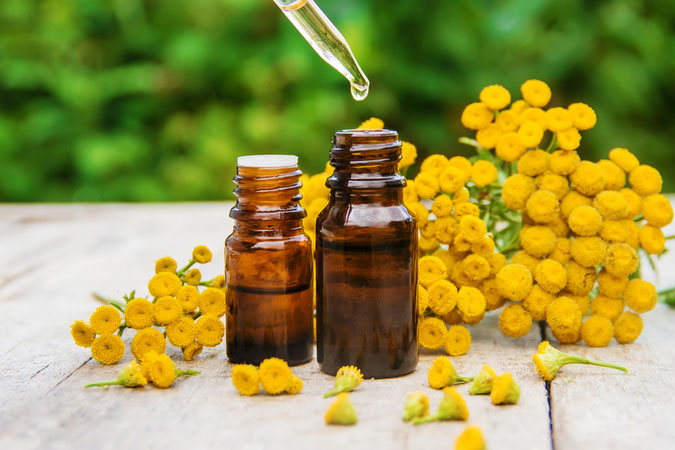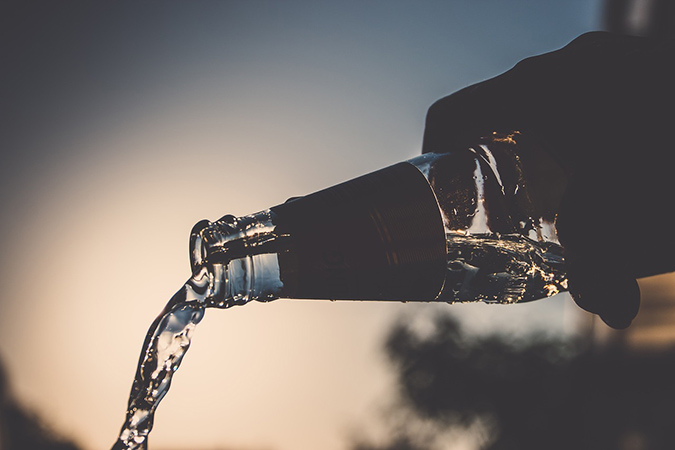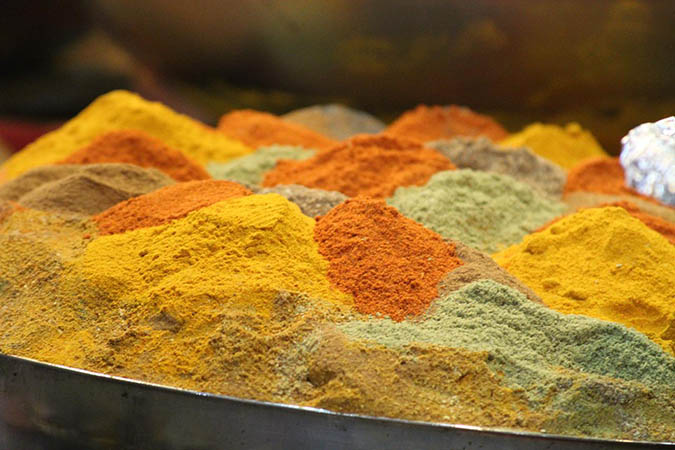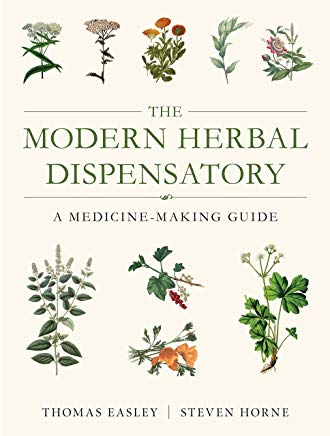Learn how to make a tincture, plus tips on understanding alcohol by volume, which alcohol to use, and where to find good recipes.
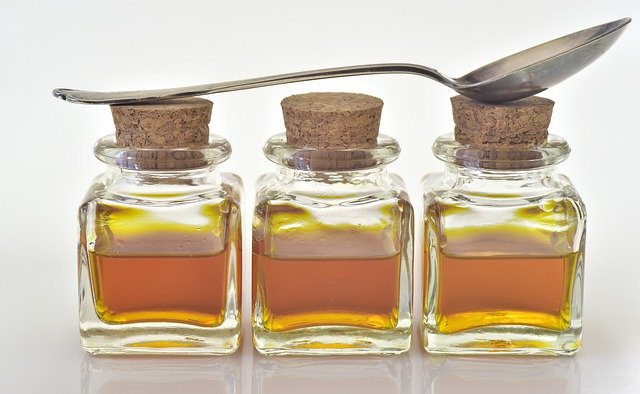
Image by Ulrike Leone from Pixabay
How to Make a Tincture
Plants are powerful medicine. Herbs in particular tend to have loads of minerals and vital properties that can help alleviate health conditions and promote better daily health. Making teas, using herbs in cooking, and adding them to salads are simple ways to increase your herbal intake at home.
Sometimes, though, drinking herbal tea is not sufficient to extract all the beneficial plant properties. Additionally, some plants lose their potency quickly after being dried, and many plants simply taste too much like medicine to make them a regular part of our cooking or drinking habits.
You May Also Enjoy:
For all of those reasons and more, tinctures can be a wonderful way to take advantage of the powerful benefits of plant-based medicines in a concentrated form at home. They are easy to make. Plus, if you grow your own herbs or buy dried herbs in bulk, making tinctures can be much more affordable than buying pre-made supplements.
There are a few things you need to know to get started with tinctures. So before you cast out your capsules or stop sipping that herbal tea, read on for an inside look at how to make tinctures at home.
Warning!
Tinctures are herbal extractions made using drinking alcohol. That means you will need to be of legal drinking age to buy the materials necessary to make tinctures. Also, if you have any health conditions or religious beliefs that make alcohol a poor choice of delivery method for your plant medicine, then alcohol-based tinctures are not right for you. (You may still be able to make tincture-like liquids using non-alcoholic solvents, although that is not the focus of this article.)
You May Also Enjoy:
“How to Make Your Own Tinctures, Salves, and Essential Oils”
What Is a Tincture?
Tincture is the word used to describe the process of macerating plant material in alcohol and water to extract medicinal and health qualities. Tinctures can be made using dried, powdered, or fresh herbs. They can be made in as little as 24 hours or can take as long as 6 weeks depending on the tincture method and herbs you use.
Menstruum or Solvent
In technical terms, the liquid used in a tincture is called menstruum. This word means “solvent.” Solvents break down the plant matter into its chemical constituents.
Solvents do not always have to be alcohol. They can also be things like pure water, vinegar, oil, or glycerite. However, when the word “tincture” is used, the primary solvent in the menstruum is alcohol. The menstruum will also always contain some percentage of water.
You May Also Enjoy:
“9 Beautiful, Edible Ornamental Plants”
“How to Make Bone Broth in 5 Easy Steps + Benefits & Uses”
“How to Make Unlimited Bread With That Last 1/2 Packet of Yeast”
Depending on the recipe you use, a tincture may include a small percentage of other solvents, as well. For example, some may use glycerite in addition to alcohol to extract plant constituents that don’t break down with alcohol alone. Or a process of boiling followed by alcohol extraction may be used.
Understanding Alcohol ABV
When making tinctures, depending on the water content of your plant material and factors such as how much resin is in a particular herb, you’ll need to use different percentages of alcohol by volume (ABV).
For example, with dried herbs, many recipes will call for alcohol with an ABV in the 40-60% range. That automatically means that the quantity of liquid you use in your menstruum will be 40-60% alcohol and will contain 60-40% water to make up the total liquid volume of 100%.
When using fresh, not dried, plant material, your plant matter already contains water. For example, morning-picked leafy green herbs can have as much as 80-85% water in them. So, when working with fresh plant material, you may use a higher ABV form of menstruum so that you are not adding much extra water to your mix.
Most people also opt for alcohol that is not flavored or aged on oak. Grain alcohol is the most common choice, but plain rum and vodka can also be used. These tend to have lower ABV rates, though, and so may only work for certain tincture recipes.
Benefit of Using 95% ABV or 190 Proof Grain Alcohol
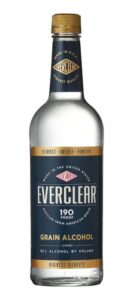
Rather than trying to buy alcohol with all sorts of different ABV levels, it’s often easier to buy alcohol that contains 95% ABV and 5% water. Everclear is the most commonly available brand of 95% ABV alcohol in the U.S. So, this is a standard supply among many herbal medicine practitioners.
Please note that Everclear also comes in other strengths, so you’ll want to make sure you get 95% ABV, which is also called 190 proof alcohol. (Proof is another way of saying ABV. The proof divided by 2 is the ABV.)
Dilution Rates Using a Calculator
When you have a 95% ABV—or 190 proof—bottle of alcohol, you can then dilute that with the amount of water necessary to come up with the right ABV for your recipe. The easiest way to figure out how to dilute stronger alcohol to a lower percentage is to use an online calculator like this one.
Manually Figuring Alcohol Dilution Rates
Or … you can do a little math on your own.
If you need 400 ml of 50% alcohol using alcohol that is 95% ABV, you will need to use 400ml x (50/95) = 210 ml of the 95% spirit. Then, you’ll subtract the 400 ml needed by the 210 ml of 95% alcohol to come up with the amount of water to use—or, 400 ml – 210 ml = 190 ml water in this case.
So, you would use 210 ml of 95% ABV and 190 ml of water to make up your 400 ml menstruum.
Here’s that formula to use when working with other amounts:
(% ABV Needed / % ABV in Bottle) x Amount of Liquid Needed = Amount of Alcohol to Use
Amount of Liquid Needed – Amount of Alcohol to Use = Amount of Water to Use
Check Your Math
Until you get the hang of this, after you make your calculations, just do a quick check to make sure you add up to the correct total quantity of menstruum required for your recipe.
Amount of Alcohol to Use + Amount of Water to Use = Amount of Menstruum Needed
Methods of Making Tinctures
Now that you’ve got your head around solvents, menstruum, and ABV calculations, you are ready to start making tinctures. The 2 most common methods of making tinctures are the folk method and the percolation method.
You May Also Enjoy:
“Calendula: Lymph Mover, Detoxifier, Cancer Fighter, and Skin Beautifier”
“10 Medicinal Uses for Comfrey: Wound Healer, Muscle Relaxer, Ulcer Treatment, Eyewash, and More”
“Elderberry: Natural Remedy for Colds, the Flu, Inflammation … Even Cancer!”
The Folk Method
The folk method is the easiest method to use. It requires no special equipment beyond what you likely already have in your kitchen. Also, as long as you follow trustworthy tincture recipes and use high-quality herbs, then this method is about the difficulty level of making sun tea or cold-brewed coffee.
This tincture process takes between 2-6 weeks on average to complete. It works well for fresh, dried, and powdered herbs. There are just 2 basic tricks you need to know to get great results every time.
Tip #1: Increase Surface Area
When using fresh or dried herbs, the key to a good result is to finely chop your herbs to increase the surface area of the plant parts that have contact with the alcohol. You can do this with a knife and cutting board. Or, you can pulse your herbs and alcohol mixture in a blender or food processor.
Tip #2: Use Powdered Herbs Before Expiration
When using powdered herbs, the particles are already extremely fine. So, no additional processing is needed. However, powdered herbs should be used as soon as possible after they are dried and powdered. The smaller particle size of powder increases oxygen exposure. That can lead to the potential for a shorter shelf life.
The Percolation Method
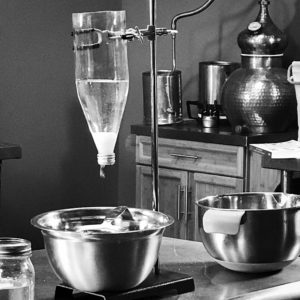
Image from Eclectic School of Herbal Medicine
The percolation method is a bit more complicated than the folk method. It requires skill to master the techniques and special equipment for good results. You are also limited to using dried, finely powdered plant material. However, it has the benefit of creating 10-30% more potent tinctures in only 1-2 days’ time.
For most home medicine-makers, the folk method is sufficient. So, we’ll focus on that for the rest of this post. But, down the road when you have a bit of experience working with tinctures, consider adding the percolation method to your skill set.
How to Use the Folk Method to Make Tinctures
For beginners, the best way to get started is using the folk method of making tinctures. In fact, we’ve already covered the hardest part of the process, which is getting the right ABV for your menstruum. After that, it’s really just a matter of measuring your ingredients and then using the following simple steps to make your tinctures:
Step #1: Cover herbs with menstruum in a jar and close the lid.
Leave at least an inch of air space in the top of the jar so that your herbs and alcohol don’t remain in constant contact with your lid. Also, for metal lids, cover your opening with plastic film or parchment before putting on the lid to prevent corrosion.
You May Also Enjoy:
“9 Simple, Effective Probiotics You Can Make at Home”
“19 Uses for Spent Coffee Grounds in Your Home and Garden”
“7 Ways to Use Pine Trees for Food and Medicine, Year-round”
Make sure you have enough menstruum in your jar so that your herbs are completely submerged at all times. Tamp herbs using a wooden spoon if necessary to submerge them completely. Also, add more menstruum if necessary to adjust for evaporation.
Step #2: Store the jar in a dark location and shake it for 30 seconds daily.
Excessive heat will increase evaporation and may negatively impact the quality of your plant matter. Extreme cold may result in the water content of your tincture freezing. To get the best result, ideally you’ll want to store your tinctures in a location with moderate temperature changes such as in your climate-controlled house.
Tinctures can be ready in as little as 2 weeks. Generally though, there is not much risk in letting your tinctures macerate longer. Many people will leave them for up to 6 weeks.
Step #3: Strain the herbs from the alcohol and begin using your tincture.
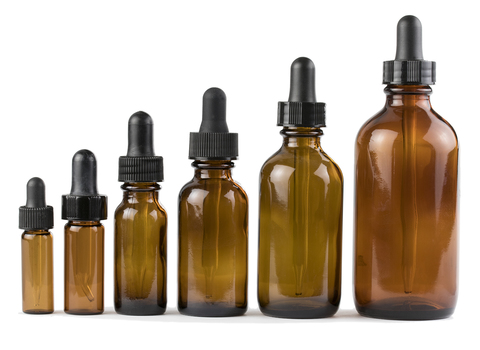
Image from Mountain Rose Herbs
Use a cloth to strain the herbs from your alcohol extraction. Muslin or flour-sack towels work well for this purpose. You can also gently press the cloth to extract all the liquid.
Store your finished tincture liquid in a dark-tinted jar. You can also use bottles with droppers and peel-and-stick labels to make dosing and bottle identification easier.
The Art of Making Tinctures
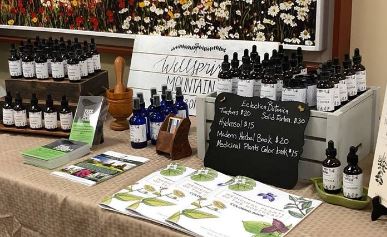
Making tinctures using the folk method really is as easy as what I described above. But, there’s a bit more art to the process before you get to those 3 simple steps.
You can simply chop up herbs and submerge them in menstruum and call it a tincture. However, without weighing your ingredients and using specific liquid measurements, it’s hard to get consistent results each time. This is why you really need good recipes to get replicable results.
You May Also Enjoy:
“How to Make Homemade Yogurt: Easy, Inexpensive, and the Healthiest You’ll Ever Eat”
Good recipes will also give you dosage information so you know how much to take on a daily basis. They’ll include possible side effects. They’ll also detail what kind of plant matter to use and offer advice on ensuring quality.
Some plants work best when dried first. Others are better fresh, because potency can be lost during drying. Some require higher or lower levels of alcohol to extract beneficial properties in different states. Good recipes will not just tell you what to add, but explain why these things are important.
Stinging Nettle Tincture
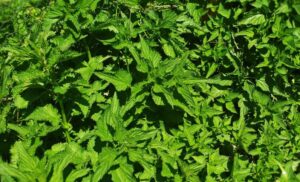
As an example, stinging nettle (Urtica dioica) leaves can be used fresh or dried in tinctures. It’s considered a great herb for beginners as it has no known warnings when ingested.
You May Also Enjoy: “19 Remarkable Benefits of Stinging Nettle”
Note: If you are harvesting this fresh, wear gloves and long sleeves because fresh stinting nettle is called stinging for a reason. Once dried, though, the plant no longer causes an itching reaction.
Fresh Stinging Nettle Tincture
When making a tincture using fresh leaves, use 1 part fresh leaves to 2 parts menstruum (e.g., 100 grams leaves to 200 ml menstruum). For your menstruum, use 95% alcohol by volume (ABV) such as 190 proof Everclear. Since freshly harvested stinging nettle is about 80% water, you don’t need to dilute your alcohol before use.
Dried Stinging Nettle Tincture
When making a dried tincture, you’ll need 1 part dried leaves to 4 parts menstruum (e.g., 100 grams dried nettle leaves to 400 ml menstruum). For your menstruum, use a mix that is 50% ABV.
If you have 100 grams of dried stinging nettle leaves, that means you’d need 400 ml of 50% alcohol. You can either measure out 400 ml of alcohol that is already reduced to 50% (such as a 100 proof vodka). Or, you can use 95% alcohol diluted to 50% (e.g., 210 ml 95% alcohol and 190 ml water).
Advice to New Medicine-Makers
Now, I’m a homesteader with mad skills when it comes to gardening and raising livestock. But, I am not a herbalist. I am just a dabbler. So, when it comes to making recipes for tinctures and other herbal remedies, I rely on information from experts I trust. Being able to make a tincture is one thing, but knowing how and when to use them wisely is another!
The stinging nettle recipe I just gave you was extracted from a book called “The Modern Herbal Dispensatory” by Thomas Easley and Steven Horne. Thomas runs the Eclectic School of Herbal Medicine that is about 7 miles from my house. I know him personally and completely trust his herbal medicine expertise. So, I tend to use his book as my source for making home remedies.
For all of you dabblers out there, I highly recommend that you find an herbalist you trust to guide you in your medicine-making, if possible. Or, consider using some tried and trusted books such as the one I mentioned above or one of these:
- “Nutritional Herbology” by Mark Pedersen
- “The Herbal Medicine-Maker’s Handbook” by James Green
- “Herbal Medicine from the Heart of the Earth” by Sharol Tilgner, ND
- “Rosemary Gladstar’s Medicinal Herbs: A Beginner’s Guide” by Rosemary Gladstar
You can also find good resources on the Internet. Trusted herbal supply retailers like Mountain Rose Herbs often offer good recipes as a way to expose new clients to herbal medicine-making. Qualified herbal medicine educators also offer simple recipes as a way to introduce the craft. (Dr. Patrick Jones and his HomeGrown Herbalist School of Botanical Medicine is one of our favorites!)
You can also get started on your journey by learning from The Grow Network founder Marjory Wildcraft. Watch the free video series on becoming a medicine-maker here.
You may also want to check out the herb monographs we’ve been adding to our lineup here at TGN. Here are just a few:
“Oatstraw: Stress Reliever, Love Potion, Brain Booster, and More”
“Equisetum Hyemale (Horsetail): The BEST Plant for Tooth Health + 8 More Benefits!”
The bottom line is that plants can be powerful medicine, and making tinctures is super easy. But, just like you wouldn’t take a bunch of prescription drugs without some professional advice, starting herbal medicine without a bit of guidance would be a pretty crazy thing to do!
What Do You Think?
Do you have any favorite tincture recipes or trusted herbal recipe sources you’d like to share with our community? We’d love to hear your thoughts!
____________________
This is an updated version of an article that was originally published on June 5, 2019. The author may not currently be available to respond to comments, however we encourage our Community members to chime in to share their experiences and answer questions!
Psst! Our Lawyer Wants You to Read This Big, Bad Medical Disclaimer –> The contents of this article, made available via The Grow Network (TGN), are for informational purposes only and do not constitute medical advice; the content is not intended to be a substitute for professional medical advice, diagnosis, or treatment. Always seek the advice of a qualified health care provider with any questions you may have regarding a medical condition. If you think you may be suffering from any medical condition, you should seek immediate medical attention. You should never delay seeking medical advice, disregard medical advice, or discontinue medical treatment because of information provided by TGN. Reliance on any information provided by this article is solely at your own risk. And, of course, never eat a wild plant without first checking with a local expert.
The Grow Network is a participant in the Amazon Services LLC Associates Program, an affiliate program designed to provide a means for our team to earn fees for recommending our favorite products! We may earn a small commission, at no additional cost to you, should you purchase an item after clicking one of our links. Thanks for supporting TGN!

Tasha Greer is a regular contributor to The Grow Network and has cowritten several e-books with Marjory Wildcraft. The author of “Grow Your Own Spices” (December 2020), she also blogs for MorningChores.com and Mother Earth News. For more tips on homesteading and herb and spice gardening, follow Tasha at Simplestead.com.
